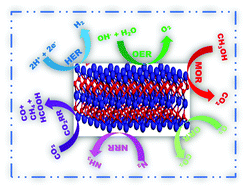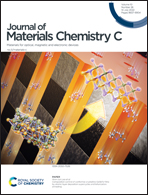3D MXenes as promising alternatives for potential electrocatalysis applications: opportunities and challenges
Abstract
Since the invention of MXenes (Ti3C2Tx), they have been positioned as a booming class of two-dimensional (2D) nanomaterials for energy conversion and storage applications. These extraordinary features arise from their surface functionalization, their high electrical conductivity, their outstanding dispersion in a variety of solvents, and the presence of several functional groups on their surfaces. However, the presence of van der Waals interactions results in the stacking of the 2D nanosheets of MXenes, like other 2D nanomaterials. This stacking results in a reduction in the number of active sites and poor ionic kinetics, which in turn reduces the activity of the material and hence the performances of MXene-based devices. Therefore, the conversion of 2D MXenes into three-dimensional (3D) MXene architecture has been shown to be an effective technique for reducing restacking, resulting in higher porosity, increased specific surface areas, and shorter mass and ion transportation distances in comparison to 1D and 2D architectures. Herein, we have attempted to summarize commonly used methodologies, such as assembly, templating, 3D printing, electrospinning, and gas foaming, for the construction of 3D MXenes and MXene-based moieties for their potential application as electrocatalytic materials. Further, the structure–property correlation of 3D MXene architectures are also given special consideration. Finally, related challenges and probable future prospects of 3D MXenes have also been discussed.



 Please wait while we load your content...
Please wait while we load your content...